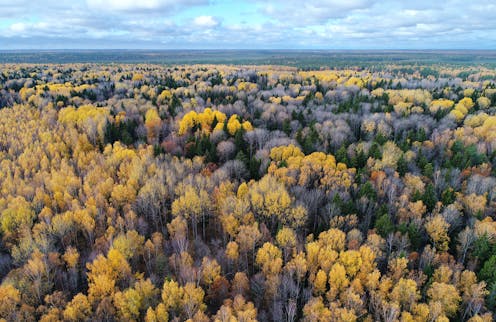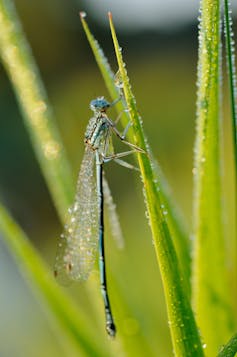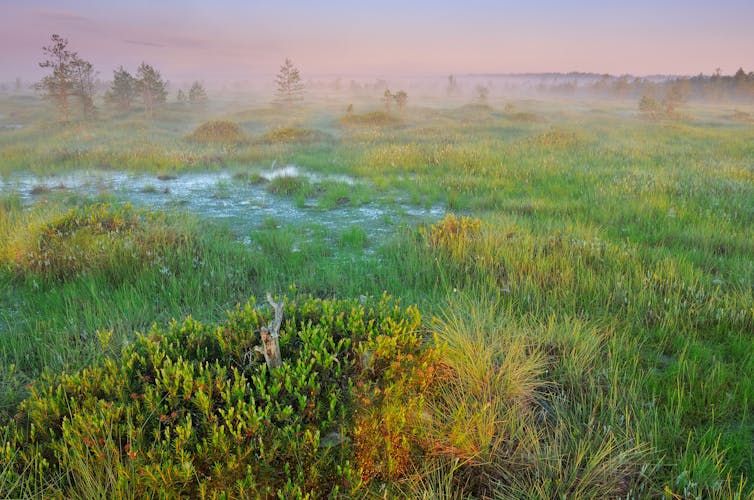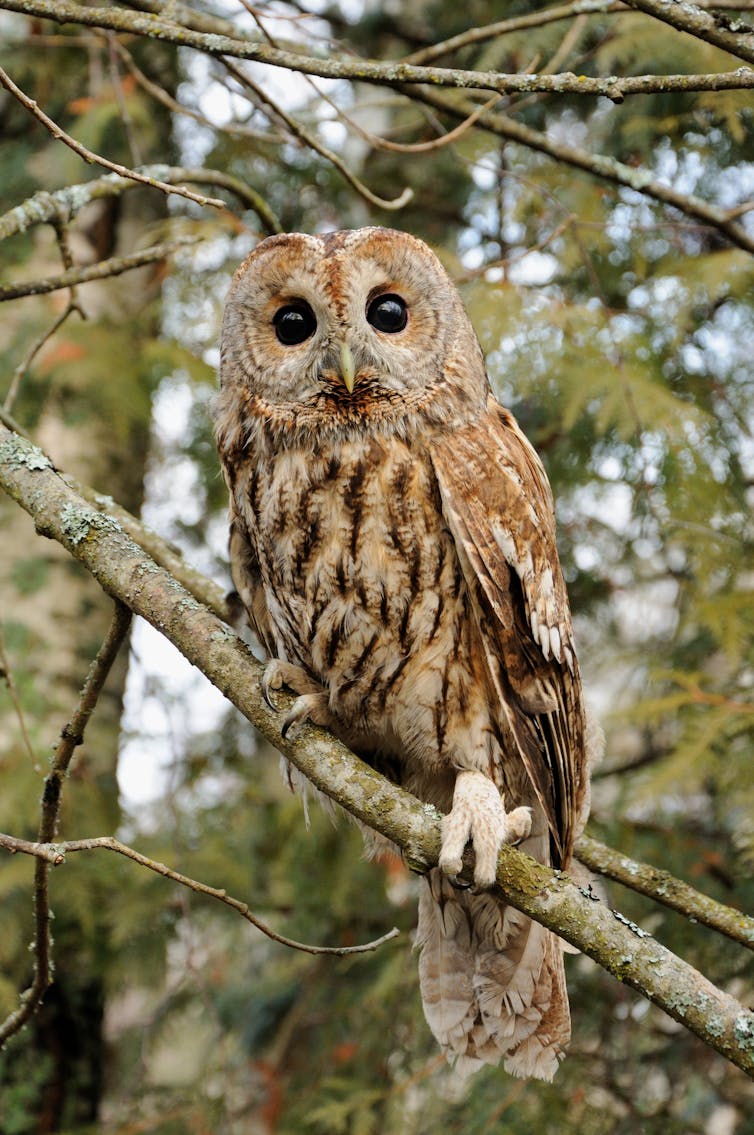
Biodiversity conservation and the careful management of natural resources are key issues today in international relations. In the field of environmental protection, transnational cooperation is growing thanks to the reserves that are part the world network of the UNESCO’s Man and the Biosphere (MaB) Programme.
Beginning in1992, partnership contacts begun to develop between the Berezinsky Reserve (Belarus) and the Northern Vosges Park (France). After 15 years, the partnership began to get up steam when the Kampinos Park (Poland) joined. Gradually, this international activity moved from spontaneous, one-off events to a long-term contractual basis. In 2007, the first memorandum of trilateral cooperation was signed. The official confirmation firmly established the partnership of the biosphere reserves, facilitated by the MaB national committees.
When 2,000 km is no barrier to friendship
Each of the three biosphere reserves is active in supporting the main goals of the UNESCO’s Man and the Biosphere Programme – the conservation of biodiversity, conducting research and monitoring, promoting sustainable development and material advancement the population.

In 1979, the Berezinsky Reserve received the status of a biosphere reserve. This is one of the few corners of the European portion of the southern taiga that is in pristine condition. It’s also immense, with a continuous array of undisturbed forests – 76,000 hectares – including stands of black alder and birch trees growing in peat bogs. They’re of prime importance for both environmental and scientific reasons, and are one of the most unique natural complexes in the Central Europe.
The Northern Vosges Regional Natural Park is located in northeastern France, in the Alsace and Lorraine regions. In 1989, the park became part of the Vosges du Nord/Pfälzerwald Transboundary Biosphere Reserve, which straddles the border between the two countries. Relatively low mountain ranges of reddish sandstone are the main geological component of this area. Despite the many differences, 60% of the plant species in the Berezinsky Reserve and the Northern Vosges are identical, as are their forests.
The Kampinos National Park is located in the centre of the Mazowieckie Lowland of Poland, to the northwest of Warsaw. Since 2000, the park and its adjacent buffer zone have been recognised as the Kampinos Forest Biosphere Reserve. Its unique landscape is composed of sand dunes and peat bogs, pine and mixed forests, flood plain and xerophytic meadows, where plants have adapted to grow with little liquid water. The Kampinos and the Berezinsky parks are united by their location in almost the same climatic zone, as well as similar natural characteristics.
Cooperation comes through comparison
For about 15 years, cooperation has grown in many areas, and scientific cooperation has developed most actively and effectively – the exchange of information and research results, experts and scientists, as well as literature, methods, approaches, ideas and experience. Opportunities have opened up for joint field research, which culminated in the exchange of reports and the publication of articles. At first, common interests included the joint study of avifauna, small mammals, bats and insects. Employees teamed up to conduct research on higher vascular plants, structure and dynamics of natural forests.

The Berezinsky Reserve has become a kind of benchmark for scientific research in the European biosphere reserves. In the Northern Vosges Natural Park and in the Kampinos National Park the landscapes were shaped by humans, but most of the Berezinsky Reserve territory remains a wildland. Because of the reserves’ pristine nature, the employees have a lot to learn, and were aided by their French colleagues in the Northern Vosges regional park. They were taught the principles of natural forestry, how to create and develop a mechanism for actions in GIS, as well as compiling databases. International friends also helped attracting naturalists and tourists, while Polish colleagues shared their experience in mowing the floodplain meadows.
What we have achieved together
The results of the comparison of natural resources carried out in these territories located in different parts of Europe turned out to be very interesting. For example, within the framework of scientific cooperation, the number of the woodchat shrike (Lanius senator) in the Northern Vosges park was established. A census of diurnal birds of prey made it possible to establish their species, breeding density, as well as the influence of intra- and interspecific relations. At the territory of all three reserves, it was possible to map and calculate the number and density of nesting territories of nocturnal raptors such as owls.

Knowledge about the arthropods of the three biosphere reserves has also been extended. When studying the species composition of insects at the territory of the Northern Vosges, 404 species of Heteroptera and 33 species of Orthoptera were found. Joint work on dragonflies’ census gave excellent results in the Berezinsky, with the list of species found increasing from 22 to 41. As part of the study, a French specialist identified a species new to the Berezinsky Reserve – the European mantis (Mantis religiosa). Species of dragonflies, bugs and beetles, new for both reserves, were also found.
Since 2011, a joint project on environmental education has been launched. An intellectual and cognitive eco-game for children was developed. An ecotourism and green building project was initiated to promote traditional wooden architecture. French photographer Thierry Girard took pictures of various landscapes, rural life and local people in the Berezinsky. The result of his work was a photo exhibition, which could be visited by everyone both in France and in the Berezinsky Reserve.
Prospects and barriers
Three reserves are separated not only by distance and borders, but also by linguistic, cultural, religious and political aspects. But over many years of close cooperation, a clear scheme for planning the joint activities of three different teams has been worked out. Joint meetings were organised periodically (on average annually), in which employees of these reserves took part. But regular “live” meetings were suspended due to the global spread of coronavirus disease beginning from 2020. In addition to the impossibility to fully exchange experience due to the pandemic, border closure and political discord have also been added.
But united by the desire to preserve the environment common to all mankind, the employees of the reserves are ready to continue their work. There are many more ideas that are worth being implemented. First to continue the development of projects on sustainable ecotourism. We would think like such a fellowship will continue to effectively exist, despite all the possible barriers and various obstacles.

For 50 years, the UNESCO Man and the Biosphere Program (MAB) has combined exact, natural and social sciences to find solutions implemented in the 727 exceptional sites (131 countries) of biosphere reserves.
The authors do not work for, consult, own shares in or receive funding from any company or organization that would benefit from this article, and have disclosed no relevant affiliations beyond their academic appointment.
This article was originally published on The Conversation. Read the original article.







